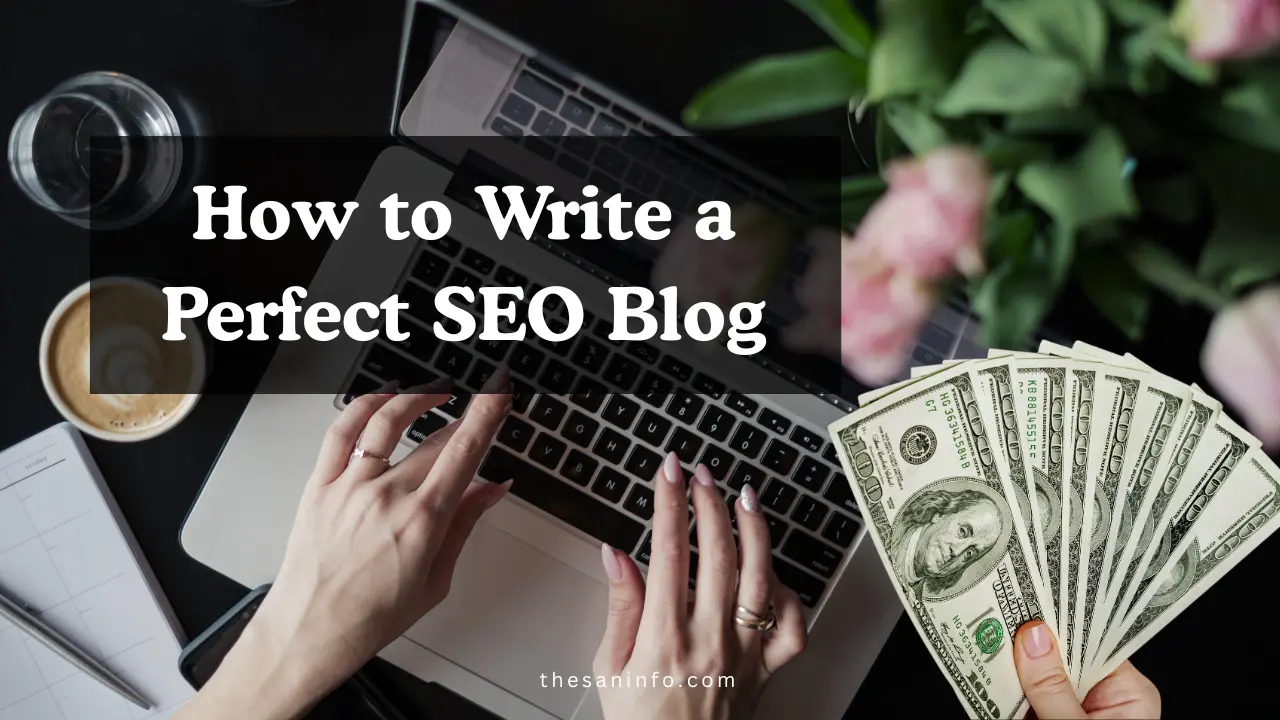✍️ How to Write a Perfect SEO Blog | Write Like a Pro
Writing an SEO-friendly blog isn’t just about stuffing keywords — it’s about creating content that both readers and search engines love. Whether you’re a beginner or an experienced blogger like The San, mastering SEO writing can help your blog rank higher, attract more traffic, and generate consistent income.
Let’s dive into the complete guide to writing a perfect SEO blog.
🌐 1. Choose the Right Topic and Keyword
Your blog should start with a focused keyword that people are searching for. Use tools like:
- Google Keyword Planner
- Ubersuggest
- Ahrefs or SEMrush
Find a keyword with low competition but good search volume, and build your topic around it.
Example: Instead of just “Blog Writing,” target “How to Earn Money with Blog Writing in 2025.”
🧠 2. Understand User Intent
Every search has a purpose — informational, navigational, or transactional. Understand what the reader wants when searching for your keyword.
Types of Intent:
- Informational: “What is SEO blogging?”
- Navigational: “Best SEO tools for bloggers”
- Transactional: “Buy SEO course online”
When your content matches the search intent, Google rewards you with better rankings.
✍️ 3. Write a Catchy Title (H1)
Your title should grab attention and include your focus keyword naturally.
Perfect Title Formula:[Number or Power Word] + [Keyword] + [Promise]
Examples:
- 10 Proven Ways to Write a Perfect SEO Blog in 2025
- The Ultimate Guide to SEO Blogging for Beginners
Keep your title under 60 characters so it displays fully in Google results.
🧩 4. Structure Your Blog Properly
A well-structured post helps both readers and search engines understand your content.
Use Proper Headings:
- H1 → Main Title
- H2 → Main Sections
- H3 → Sub-points or Examples
Break large paragraphs into short, readable chunks. Use bullet points, lists, and bold text for emphasis.
🔑 5. Optimize Keyword Placement
Strategically place your focus keyword in:
- Title (H1)
- First paragraph
- Meta description
- At least one H2 heading
- Image alt text
- Naturally throughout the content (avoid overuse)
Keyword density should be around 1%–2% of total word count.
🖼️ 6. Add Images and Alt Text
Images make your blog visually engaging. Always compress them for fast loading and add alt text with relevant keywords.
Example: Instead of naming your image “IMG1234.jpg”, use “seo-blog-writing-tips.jpg.”
🔗 7. Use Internal and External Links
Linking improves SEO and credibility.
Internal Links: Link to other posts on your website.
External Links: Link to trusted sources (e.g., research papers, stats, or top sites).
Example: “Learn more about Affiliate Marketing Tips for Bloggers”
⏱️ 8. Focus on Readability and Engagement
Use tools like Grammarly or Hemingway Editor to improve your writing style.
Keep it simple:
- Write like you’re talking to a friend.
- Use active voice.
- Add examples, quotes, or relatable experiences.
A blog that connects emotionally performs better than one that just shares facts.
📱 9. Make It Mobile-Friendly
Most readers come from mobile devices. Ensure your blog design is responsive, loads fast, and looks great on smaller screens.
Use Google’s Mobile-Friendly Test Tool to check your site.
⚡ 10. Add Meta Title and Meta Description
Meta tags help Google understand your post.
Example:
- Meta Title: How to Write a Perfect SEO Blog | Step-by-Step Guide
- Meta Description: Learn the best tips to write SEO-friendly blogs that rank higher on Google, attract traffic, and boost earnings.
Keep meta descriptions under 160 characters.
📈 11. Update Your Blog Regularly
Google prefers fresh content. Keep updating your blog posts with:
- Latest data or stats
- Updated examples
- New SEO techniques
Refreshing your content can instantly boost rankings.
🎯 12. Track Performance
Use Google Analytics and Google Search Console to track:
- Your traffic sources
- Keyword performance
- Bounce rate and CTR (Click-Through Rate)
Analyzing results helps you improve future blog posts.
Final Thoughts by The San
Writing a perfect SEO blog is about balance — between creativity and strategy. You’re not just writing for Google; you’re writing for humans who crave value, inspiration, and solutions.
Be consistent, be authentic, and always write with purpose.
Because when your words connect, Google follows.
✨ Keep writing, keep ranking — your next blog could change everything!


